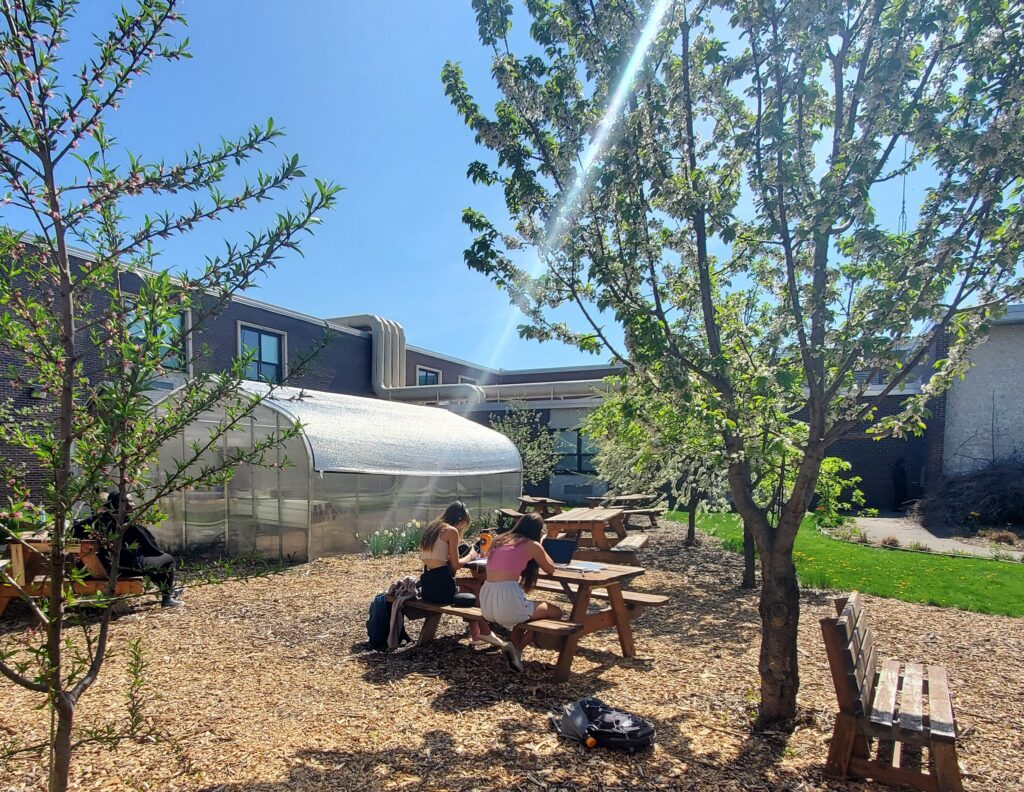 Schools that connect students to nature and trees can register as a Tree Campus K-12 site. This Arbor Day Foundation program recognizes schools that inspire the next generation through experiences with nature inside and outside of the classroom. Schools need to meet four program goals to qualify. Continue reading “Tree Campus K-12”
Schools that connect students to nature and trees can register as a Tree Campus K-12 site. This Arbor Day Foundation program recognizes schools that inspire the next generation through experiences with nature inside and outside of the classroom. Schools need to meet four program goals to qualify. Continue reading “Tree Campus K-12”
Taking action
La Crosse County Added To Spongy Moth Quarantine

A spongy moth caterpillar consumes a leaf. / Photo Credit: Bill McNee, Wisconsin DNR
By Wisconsin Department of Natural Resources (DNR)
La Crosse County has become the latest Wisconsin location to be added to the state and federal spongy moth quarantine, joining most eastern and central Wisconsin counties already considered to be infested by the invasive insect.
The Wisconsin Department of Agriculture, Trade and Consumer Protection (DATCP) announced the change on April 1, based on trapping data collected last year.
Continue reading “La Crosse County Added To Spongy Moth Quarantine”
April Offers Opportunities For Tree Lovers
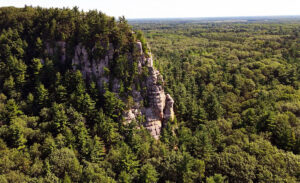
A beautiful view of Wisconsin forestland awaits visitors to Roche a Cri State Park in Adams County. / Photo Credit: Wisconsin DNR
By Art Kabelowsky, DNR Outreach and Communications
Arthur.Kabelowsky@wisconsin.gov or 608-335-0167
“Acts of creation are ordinarily reserved for gods and poets. To plant a pine, one need only own a shovel.”
Those were the words of Wisconsin’s most prominent conservation expert, Aldo Leopold, who authored the famous book, “A Sand County Almanac” among his many achievements.
This month, everyone in Wisconsin will have the chance to follow Leopold’s advice – even if in a small way, because many small efforts can add up to a prominent positive impact on Wisconsin’s trees and forests.
Continue reading “April Offers Opportunities For Tree Lovers”
Wisconsin Tree Leaders Recognized For Exceptional Community Service
By Jenn Janness, DNR Urban Forestry Outreach Specialist
Jennipher.Janness@wisconsin.gov or 715-815-7173
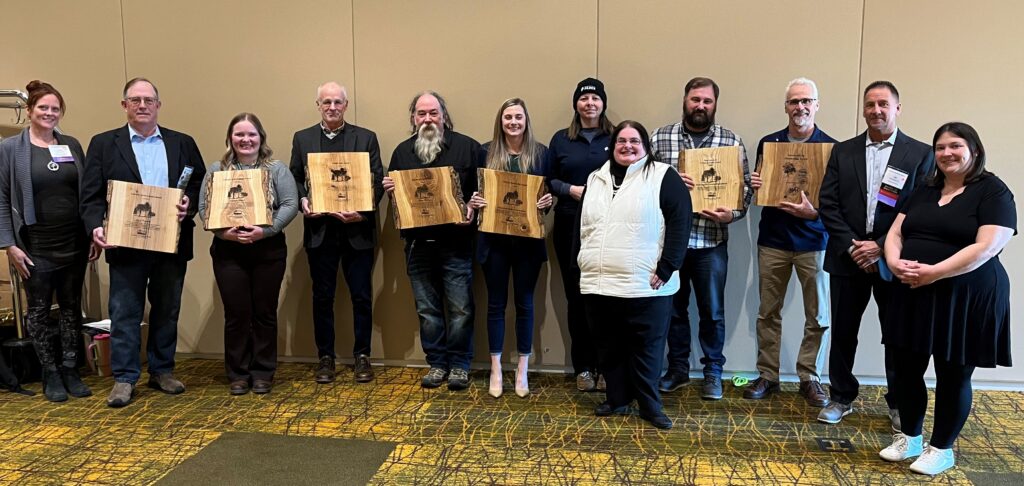
The Wisconsin Urban Forestry Council presents annual awards for furthering urban forestry in the state.
The Wisconsin Urban Forestry Council recently announced its annual awards honoring those dedicated to protecting, preserving and increasing the number of trees that line city streets, fill community parks and beautify neighborhoods throughout the state.
The Wisconsin Urban Forestry Council advises the Wisconsin Department of Natural Resources (DNR) on managing urban and community forest resources.
“Each year, these awards remind me of how special the people are in our industry and the numerous accomplishments they fulfill,” said Lee Fredericks, Wisconsin Urban Forestry Council Award Committee Chair. “Whether they are taking on projects to expand their leadership, involving the next generation of arborists or advancing species diversity in the urban forest canopy, the state as a whole truly benefits.”
This year’s recipients were announced at the 2025 Wisconsin Arborist Association/DNR Urban Forestry Conference in Green Bay. The categories and winners are: Continue reading “Wisconsin Tree Leaders Recognized For Exceptional Community Service”
Spring Brings Opportunities To Protect Oak Trees
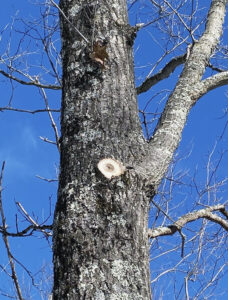
Pruning, cutting, or wounding oaks during April through July leaves them vulnerable to oak wilt. / Photo Credit: Paul Cigan, Wisconsin DNR
By Paul Cigan, DNR Forest Health Specialist
Paul.Cigan@wisconsin.gov or 715-416-4920
With warmer spring weather fast approaching, the Wisconsin Department of Natural Resources (DNR) recommends protecting oaks from the often-fatal disease, oak wilt, by refraining from pruning, cutting or injuring oak trees from April through July.
Oak wilt is a serious disease that kills trees in the red oak group (including pin oak, northern red oak and black oak) and weakens those in the white oak group (bur oak, swamp white oak, white oak and English oak).
Continue reading “Spring Brings Opportunities To Protect Oak Trees”
Treat Ash Trees Against Emerald Ash Borer This Spring
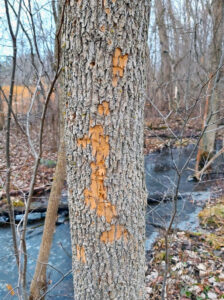
An ash tree next to a park trail in Winnebago County shows damage from woodpeckers feeding on EAB larvae beneath the bark. / Photo Credit: Bill McNee, Wisconsin DNR
By Bill McNee, Forest Health Specialist
Bill.McNee@wisconsin.gov or 920-360-0942
Property owners with healthy, valuable ash trees are encouraged to treat them with insecticide this spring to protect against emerald ash borer (EAB).
The invasive pest is currently the most damaging threat to trees in Wisconsin, killing more than 99% of the ash trees it infests.
Continue reading “Treat Ash Trees Against Emerald Ash Borer This Spring”
Tune In: Forest Health Team In The Media
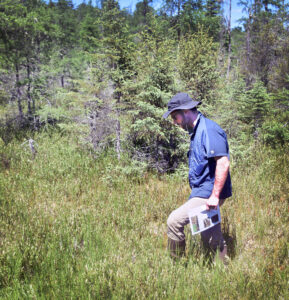
Paul Cigan looks for various species of invasive plants during a visit to a bog at the Wisconsin Department of Natural Resources’ Kemp Research Station on Tuesday, June 25, 2024. / Photo Credit: Art Kabelowsky, Wisconsin DNR
By Art Kabelowsky, DNR Outreach and Communications
Arthur.Kabelowsky@wisconsin.gov or 608-335-0167
Paul Cigan, the Wisconsin Department of Natural Resources’ (DNR) forest health specialist for the northwest zone, recently appeared on the Ventures of the Land podcast, hosted by George Atwell, to discuss oak wilt’s past, present and future in Wisconsin.
The talk included details on how and when the invasive fungal disease arrived in the state, how it attacks oak trees and methods landowners can use to manage the disease.
Weed Management Area Grant Deadline Approaching
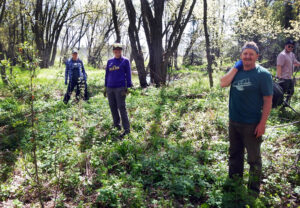
Volunteers at a garlic mustard-pulling event on the Montreal River in Iron County, part of a control project planned by a previous WMA-PFGP recipient. / Photo Credit: Ramona Shackleford, Northwoods Cooperative Weed Management Area
By Wisconsin DNR
The April 1 application deadline for Weed Management Area-Private Forest Grant Program (WMA-PFGP) grants is coming up. There is still time to apply for funding to help you control invasive plants on your forested land in 2025.
Controlling invasive plants on your forested property can be a challenging and costly endeavor. WMA-PFGP grants help to make this process a little easier for its recipients.
Continue reading “Weed Management Area Grant Deadline Approaching”
Now Is Time To Seek Out Spongy Moth Egg Masses
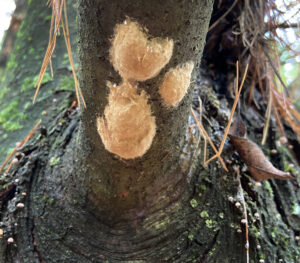
Large egg masses are seen on a tree at the Kettle Moraine State Forest-Southern Unit in 2021. / Photo Credit: Bill McNee, Wisconsin DNR
By Bill McNee, DNR Forest Health Specialist, Oshkosh;
Bill.McNee@wisconsin.gov or 920-360-0942
It might be a bit chilly these days, but spring is coming. When the weather warms up, the annual return of spongy moth caterpillars will begin.
There’s a way for landowners to make a dent in the population of the hungry caterpillars: Get out now to locate and properly dispose of spongy moth egg masses, produced by adult moths last summer.
Continue reading “Now Is Time To Seek Out Spongy Moth Egg Masses”
Make Plans Now To Fight Spongy Moth In 2025

Large egg masses are seen on a tree at the Kettle Moraine State Forest-Southern Unit in 2021. / Photo Credit: Bill McNee, Wisconsin DNR
By Bill McNee, DNR Forest Health Specialist, Oshkosh
Bill.McNee@wisconsin.gov or 920-360-0942
Part Two of a report on spongy moth in Wisconsin in 2024 and 2025. Part One was published in December.
The Wisconsin Department of Natural Resources (DNR) is encouraging property owners to examine their property for spongy moth egg masses and plan for action this spring if needed. Each spongy moth egg mass contains hundreds of eggs that will hatch into hungry, leaf-eating caterpillars this spring. Large numbers of these invasive caterpillars can be a tremendous nuisance that may cause tree mortality.
Continue reading “Make Plans Now To Fight Spongy Moth In 2025”
